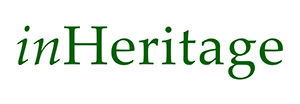In October I was privileged to visit The Higgins, Bedford, before spending a morning with members of the Saturday Archaeology Workshops group.
In the past, this impressive group has constructed a roundhouse, conducted excavations, visited and reviewed major exhibitions and heritage sites, and learned techniques such as soil sampling, using microscopes. Our interpretation workshop offered the participants an insight into another aspect of archaeology and heritage professions, and offered inHeritage an invaluable opportunity to learn from our audience.
We met at Bedford River Valley Park’s Priory Country Park to discuss what makes a good interpretive trail, or good interpretive activities, and took a very wet, somewhat curtailed, look around the park before the SAW members cracked on with designing leaflets and creating interpretive content.
Along the way, the group picked out engaging or unappealing interpretation from a suitcase full of samples. We brainstormed the kinds of activities often offered to families and young visitors, then used a quickfire show-of-hands love-it-hate-it-neutral evaluation. We saw how for everything one person loves, there’s another who hates it – with the possible exception of spotter’s guides and ‘facts’ (Did you know? Strange but true…5 things you should know about…) These got thumbs up all round. Further Information sections offering Web links were very popular too and all the group members said they used the Internet to find out more about places or themes either before or after visiting heritage sites.
While younger participants were keen on colourful, fun-packed, jam-packed activity offers (a Treasure Box approach), the older teens preferred a coolly classical, clear design, with plenty of white space, clearly differentiated content, a clear logical reading order, and ‘things that make you feel clever’ – a photographic illustration of Doric, Ionian and Corinthian column heads was especially praised.
A very low-cost handwritten, hand-drawn leaflet photocopied onto basic matt coloured card was popular too – the handwriting ‘makes it feel more personal, friendly and intimate’.
If, like us, you are often asked about QR codes and digital products, you may be interested to know that in this group, none used QR codes, and all said they like the tactility of a leaflet, preferring good quality paper, a nice finish, with colour. The group pressed their environmental concerns, stating that leaflets should be recyclable – whether at onsite recycling facilities, noted on the leaflets, or by offering visitors the chance to replace leaflets for other visitors to use.
We are grateful to the Higgins SAW group for participating in the workshop, and giving their input and ideas.
News
